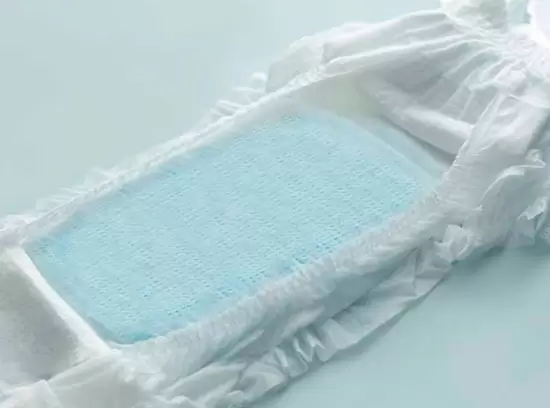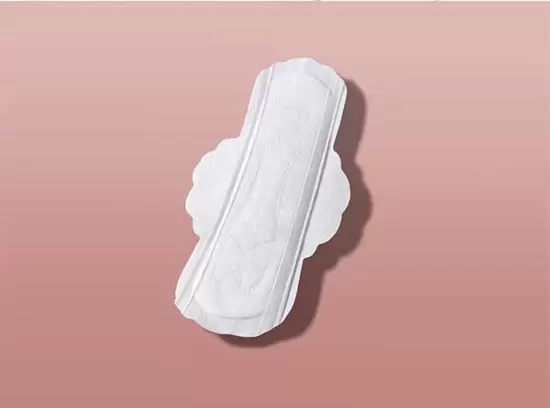Breastfeeding pads are used to control milk leakage during breastfeeding. They are made of super absorbent polymer material on the inside, which can absorb excess breast milk and fix the overflow inside, and a breathable and waterproof layer on the outside, which can keep your breasts dry and cool.
1. Material of breastfeeding pads
(1) Polyester. Advantages: easy to clean, affordable price. Disadvantages: not breathable, the skin of the nipple part is prone to skin disease after a long period of humidity and sweltering.
(2) Brushed cotton. Advantages: soft and comfortable, water-absorbent, water absorption. Disadvantages: after the use of a long time, it will have the phenomenon of dropping cotton wool, the price is slightly higher than similar products, slightly thick and hot in the summer.
(3) 100% cotton. Advantages: soft and breathable, strong water absorption. Disadvantages: need to be cleaned in time.
(4) Synthetic non-woven, wood pulp, film. Advantages: breathable, dry. Disadvantages: need to be replaced frequently.
(5) High absorption polymer, crushed pulp, non-woven fabric. Advantages: polymer absorbent material absorbent layer can quickly absorb and prevent spillage of breast milk; ultra-thin three-dimensional cut, completely fit; soft and comfortable material to ensure ventilation, will not feel wet and stuffy; each piece is individually packaged, easy to carry when going out; three-dimensional molding, made in accordance with the lines of the breast, completely fit.
2. Why should we use breastfeeding pads?
Because during breastfeeding it is easy to have milk overflow, in this case you can use breastfeeding pads to absorb milk and improve the skin to avoid the uncomfortable situation of the skin.
3. When to use breastfeeding pads during pregnancy?
The time to use breastfeeding pads for pregnant women is usually the third trimester and the whole breastfeeding period. When pregnant women start to squeeze their nipples in the seventh month of pregnancy, that is, at 30 weeks of pregnancy, they can see a little bit of milk coming out, but of course, if there is a lot of milk, it will overflow on its own. At this time, you need to pad the breastfeeding pad, which needs to be replaced in time. When there is a large amount of overflow milk, dry and clean breastfeeding pad should be changed every one to two hours. A week after birth, your baby’s milk will start to increase significantly, and your baby will eat breast milk once every two to three hours. When the baby does not suck the milk, your breast will be very swollen. In this process, breastfeeding pad can also be used. There is no fixed conclusion on the specific use of breastfeeding pads, depending on the specific situation of nursing mothers.
4. The selection tips of breastfeeding pads
(1) Strong absorbency. It is best to choose a breastfeeding pad with 4 locking slots. The common breastfeeding pads on the market have 3 locking slots. Those with 4 locking slots are more absorbent and less likely to leak.
(2) Ensure soft and comfortable. A good breastfeeding pad will keep the breast area dry and not irritate the breast after absorbing the overflowing milk.
(3) With 2 anti-slip tapes. In this way, it is easy to stick it on the underwear, so that it does not automatically slip off and cause embarrassment after absorbing too much milk. Many breastfeeding pads have only one anti-slip tape.
(4) Ultra-thin single piece of non-woven packaging, safe and hygienic and easy to carry. Many breastfeeding pads use plastic packaging, which is neither hygienic nor environmentally friendly.
5. Is it better to have disposable breastfeeding pads or washable ones?
It is best to choose disposable breastfeeding pads. There are many cotton reusable pads on the market, try not to choose this kind of reusable pads because of its low price. First of all, the reusable pads are very poor in absorbency, so it is difficult to play the role of overflow prevention. Secondly, because breast milk is rich in nutrition, after overflowing for a long time, it is easy to breed bacteria, and these bacteria will be attached to the pad. By cleaning, many bacteria cannot be killed. So when it is used again, it is easy to cause breast infection and infect the baby.













